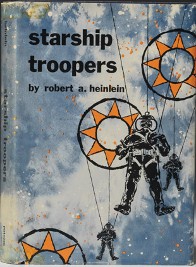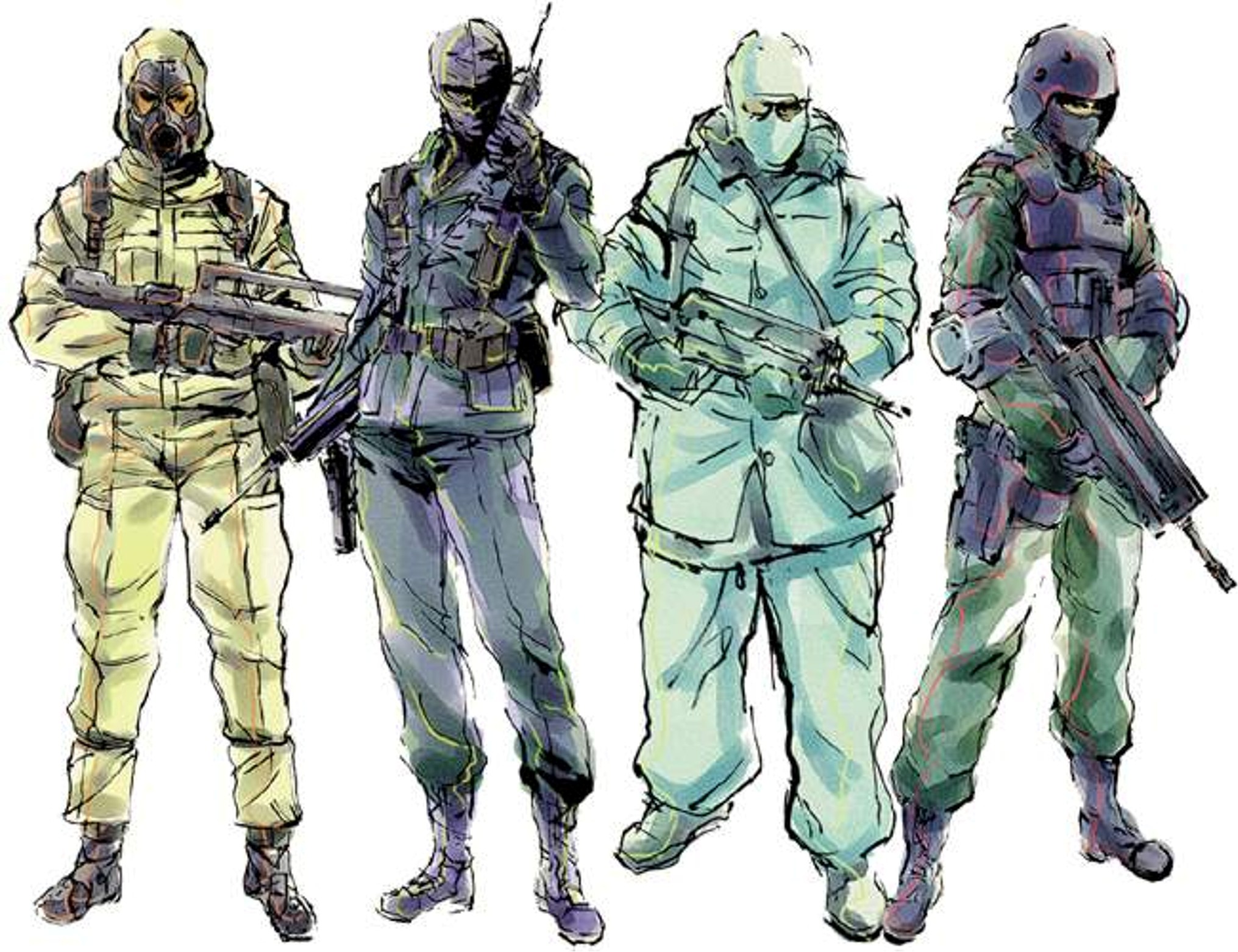 Artist's conception future uniforms...Metal Gear Wiki.
Artist's conception future uniforms...Metal Gear Wiki. Yankee Papa’s Uniforms series…
UNIFORMS: Towards The Practical Part One 1775-1915
UNIFORMS: Towards the Practical Part 2 1914-1975
UNIFORMS: Towards the Practical Part 3. 1917-2017 Camouflage, Conflict, and Chaos
“…General requirements for military textiles: Future soldier requirements: Dealing with complexity; Non-woven fabrics for military applications; Mechanical failure criteria for textiles and textile damage resistance; The sensory properties and comfort of military fabrics and clothing; Testing and analyzing comfort properties of textile materials for military; Sweat management for military applications; Cold weather clothing; Designing military uniform with high-tech materials.. …Protection: High-performance ballistic fibers; Ballistics testing of textile materials; Ballistics testing of textile materials; Chemical and biological protection; Self-decontaminating materials for chemical biological protective clothing; Camouflage fabrics for military protective clothing. New developments in coatings and fibers for military applications; Military fabrics for flame protection…”
Research and development plan on taking uniforms into the future. Textile research alone opens countless possibilities, (not all of them good…) The above paragraph is from the book “Military Textiles.” (See Suggested Reading at bottom of article…)
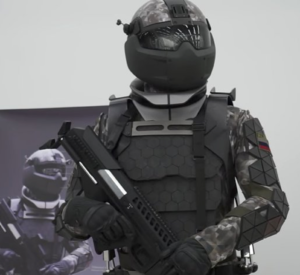
Russian “Star Wars” outfit…Youtube via Ruptly.
If the average civilian gives any thought to future uniform development, they perhaps imagine something on the order of the Russian “Star Wars” photo above. Depending on what is involved, the image can range from “Borg” to “Imperial Storm Trooper” to Robert Heinlein’s “Starship Troopers.” (The book…not the travesty of a film…) (See Suggested Reading at bottom of article.)
Uniforms and equipment are traditionally separate subjects…but in the last century the dividing line is sometimes blurred. For example, a helmet qualifies in both categories… though it is progressing from a “tin pot” to not only ballistic protection but environmental control, communications center… and computer display mode.
Some of the developments are so advanced and complex that the soldier inside is no longer visible. The fly in the ointment would seem to be that even if battery/motor durability/reliability issues solved… how much does this fearsome “Death Machine” cost? Then the real question… How much does one RPG-7 in the hands of an ignorant (but fanatic) peasant cost? Aye, there’s the rub.
Story of a university agricultural department that invented a perfect cattle feed. Pellets that were completely nutritious, relatively inexpensive. They handed out sample loads to a dozen farmers. Results soon came back. The cattle would barely touch… then ignored. One farmer though… his cattle went through the whole allotment. When they asked him why his cattle seemed so eager, he replied: “I put molasses on it. Cattle will eat anything with molasses on it…” All of the team’s calculations had ignored taste. Military R&D teams can miss the obvious as well.
Research and Development teams can be a soldier’s worst nightmare. Like the agriculture department, they may not have “consulted the cattle…” Scientists and generals may not have spent days in the mud or snow themselves…and what looks good on paper (or computer programs) may come up short of being the desired improvement.
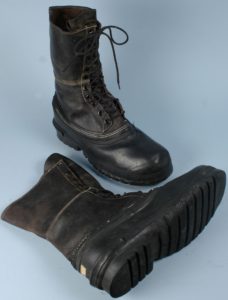
Korean War shoepacs…public domain.
The “shoepac” was a boot that R&D developed for soldiers in cold weather environments in the last years of WWII. Consisted of leather uppers and rubber lowers with thick woolen inserts and a couple of pairs of thick socks. Some reports unfavorable as not all cold weather environments the same. In the winter of 1950-51 in Korea, they proved to be a disaster.
Marines and soldiers in North Korea in late 1950 had Arctic weather come straight down from Siberia into the North Korean high country. While at the same latitude as Venice… winter weather savage… -25 to -40 degrees F.
Boots that might have been fine for duck hunters in late Fall in Vermont, proved inadequate for what the infantry faced at the “Frozen Chosin…”
R&D had contemplated such a situation and simply ordered that socks and inserts be “frequently” changed to prevent sweat from freezing and causing frostbite. Like “twenty years in solitary” it was easy to say, but hard to do.
Men had to keep up with marching columns… wet liners or not. In a fixed location, such as the base at Hagaru-ri, warming tents set up where men could be rotated off the line for short periods… get some hot coffee (that wouldn’t freeze in canteen cups in the open in precious little time) and above all… change socks and liners… (wringing out the wet ones, warming them close to warming tent stoves… then placing them inside clothing to finish drying out…) Otherwise, the men had to go through the agony of attempting to change out in the open… in the savage cold.
Too many of the lads marched non-stop (when not fighting) towards the South… then directly into a hole in the snow at night. Frostbite often caused more casualties than the masses of Red Chinese. The infantry had been shortchanged by a Research and Development program that mandated a seriously impractical maintenance procedure…designed by men who never experienced what the soldiers and Marines did.

“Marine Berets” USMC image.
Speaking of Marines… While the Marines deserve kudos for developing an excellent camo pattern for a very reasonable price…that doesn’t mean that their R&D is always on the tracks. See photo above where the Corps actually considered issuing British style berets to all Marines. Fortunately, somebody put a stake in the program’s heart. More unfortunate examples…such as two-piece camo uniforms in WWII that were too heavy for hot weather fighting… didn’t “breathe” and had a camo patterns that essentially didn’t work… Also, the Reising submachine gun… fine for domestic police use, but hopeless in a battlefield environment. The Army had the good sense to reject the weapon… the Marines discovered the many problems on Guadalcanal.
There is always hope. Marines not only testing new jungle boots, but also boot drying towels. (See image below…)
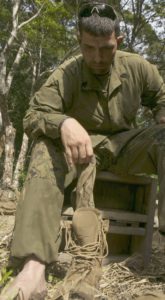
Boot drying towel with test boots. USMC image.
Below are five links to articles (in the past 12 months) re the Army and Marine Corps work on hot weather uniforms and jungle boots.
.
.
https://www.army.mil/article/183541/new_army_jungle_wear_gives_trench_foot_the_boot
.
http://asc.army.mil/web/news-alt-amj17-the-jungle-boot/
.
While combat troops’ input important… it needs to be screened. Sometimes troops can be as conservative as their generals. Many Marines did not want to switch from 1903 Springfields to M-1 Garands… though tactical realities in the Pacific war absolutely required it. (And contrary to old yarns, Marines on Midway…prior to the battle… were issued with Garands, while many soldiers landed in North Africa months later still carrying bolt action Springfields… as had the 1st Marine Division on Guadalcanal in August of 1942…)
Many (most of whom were not in Vietnam) see no reason to replace the Vietnam era jungle boot. While a definite improvement over regular boots… and a favorite of a few… it has its limitations and seriously needs replacement. For comments on the subject of that and boots in general, see link.
A more reasoned discussion may be had re jungle uniforms. Some might think that the jungle uniform as massively issued in Vietnam had it all. Relatively cheap, lightweight, comfortable. When it got soaked… it didn’t take long out of the rain for it to dry (especially in the sun…) Rip stop helped, but when uniform ratty and torn…could be replaced at little cost. But this too had its limitations.
Whoever designed it included fabric “ties” at the bottom of the trousers for “blousing” over the boots to help keep out bugs. Almost everybody who was issued this item… immediately cut out the ties and replaced with boot blousing bands and the like…with no adverse comment from the brass.
And times and places in Vietnam this uniform was very much too lightweight. Classic example… Khe Sanh in the higher country during the monsoon (later 1967, early 1968…) Marines were not only issued with M-65 field jackets to wear (especially at night), but also some were issued wool cold weather shirts to be worn under jungle fatigues.
Much current discussion re new jungle uniforms includes large amounts of nylon or other synthetic fibers. Lot of controversy… This adds to durability and to water “resistance”, but once truly soaked one would expect increased time for drying. Various other “additions” such as “chemical warfare resistant fibers…” Well, beyond my ken, but does that require “non-breathing” fibers and more weight and more water retention? I don’t know.
I do know that weight, cost, and tactical good sense should mandate the prohibition of Velcro on any uniform designed for combat use. Velcro is evil. If brush rubs against it, it may well strip off… making an unmistakable sound… (And have you ever accidentally rubbed an injury scab on it?) As for the idea of ammo pouches with Velcro fasteners… Soldier dives into brush… catching breath… hears enemy getting close… realizes that he only has a couple of rounds left in his magazine as he hears voices of enemy soldiers coming closer…
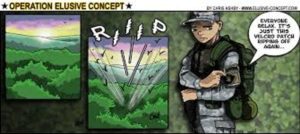
“Velcro is evil…”
Velcro “mounting points” requires extra reinforcement… which adds to weight… and is another place where water takes longer to shed. Also adds to cost… Jungle uniforms, no matter how well constructed…need to be replaced with some frequency. Rather than Velcro, maybe a “template” where dark dye can be used for division patch… and others for name and U.S. Army/U.S. Marines… Only other important item, rank insignia…subdued metal/plastic would fill the bill. Mass of other patches, bells, and whistles can be retained for non-tactical uniforms.
One issue that comes up from time to time is private purchase by the soldiers themselves. Obviously, any items contemplated need approval at some level… and then “checked off” by maybe the Company First Sergeant.
Items need to meet all requirements including durability. During WWII “Merrill’s Marauders” were issued a type of jungle boot that was extremely comfortable, but worn away from the swamps…on dry and rocky ground… the boots would soon fall apart. Members of the unit tied the jungle boots to the back of their packs and only used them where appropriate.
In Rhodesia, some units, (including mine) permitted private purchase items. All had to be approved by the immediate command structure… (who also steered the lads towards the best sources re quality and price…) The force that I was in actually had (with minor exceptions) no “high top” combat boots. A few “man-mountain” types had “flap uppers” sewn onto the heavy issue low-cut boots… but most considered that way too heavy for the Rhodesian bush.
I wound up with what were called “desert boots…” High-top double buckle combat boots. Most comfortable that I ever wore. The only problem was that they would only last a few months at best. But as you (or one of your mates) were at most an hour’s drive from a city large enough to have a civilian supplier… replacements could be purchased about one month before estimated wear-out date.
Somehow an attempt must be made to make combat uniforms “garet (garrison) trooper” proof. The BDUs of the 1980s all had instructions saying “Do Not Starch”, but even Fleet Marine Force and Army readiness troops often had crisply starched combat uniforms Stateside. Even a boot with leather turned rough side out… somebody up the chain of command may yet think of a way to “spit-shine” them.
Below are images of “future military” changes at R&D…
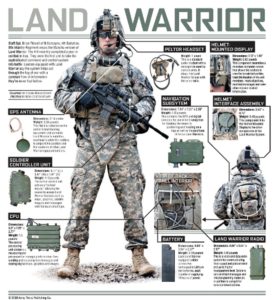
Land Warrior…Army Times
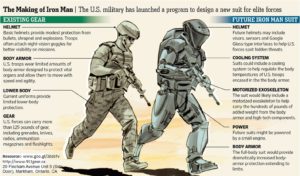
Iron Man
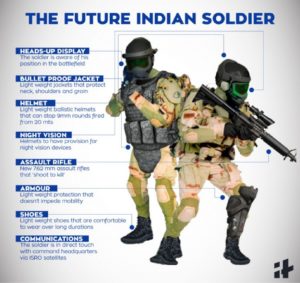
Indian Army future gear…Indian Army
In closing, perhaps some thought should be given to “less conventional” potential recruits. A number of constituencies might find the hot weather uniform below to their liking… including of course, many who were denied enlistment because of visible tattoos… The “presentation” of the uniform seems to make full allowance for them.

Spanish Legionnaire…Spanish Army
-Yankee Papa-
-SUGGESTED READING-

